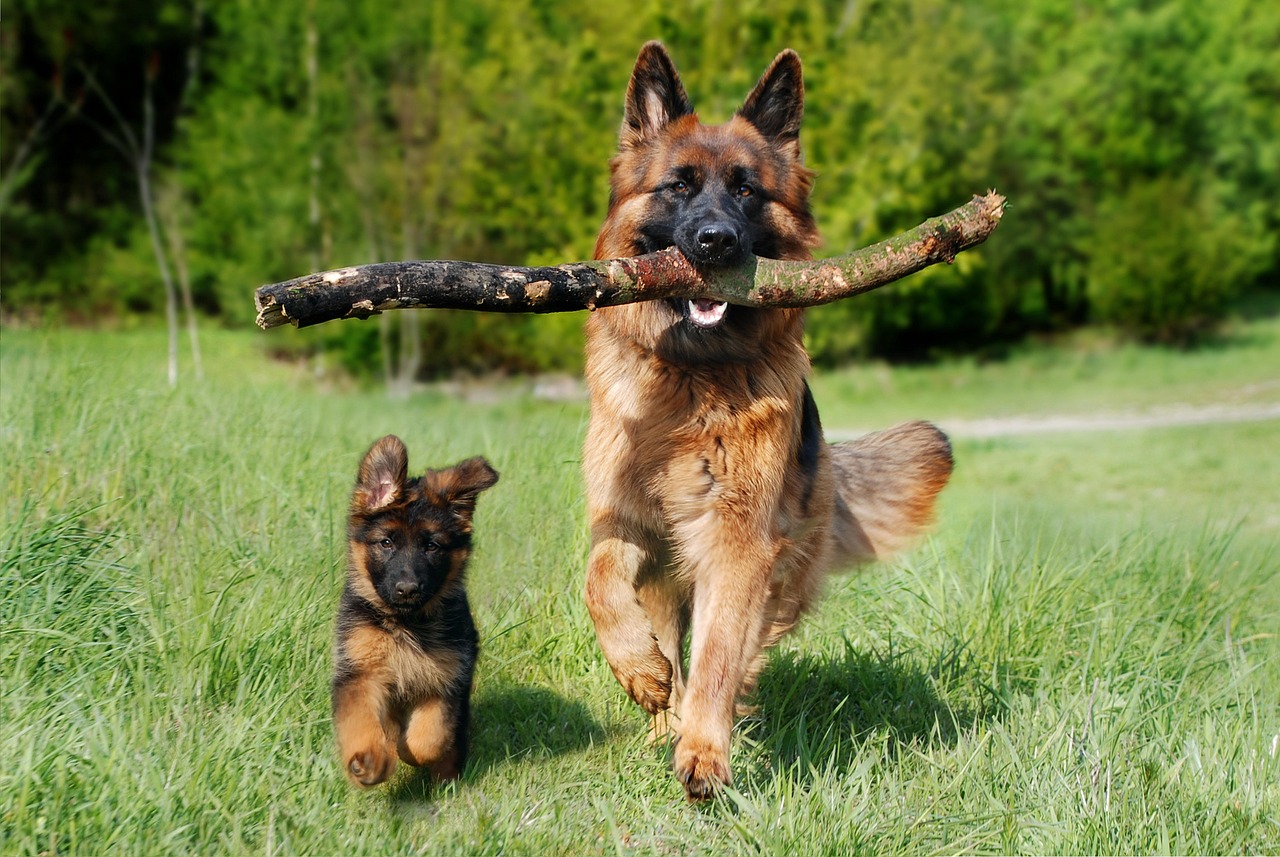
Healthy Dog Treats for Training: Keeping Your Pup Fit While Learning
Training is an essential part of any dog’s development. Whether you are teaching a new puppy basic commands or reinforcing good behavior in an older dog, positive reinforcement with treats is one of the most effective training tools. However, many store-bought treats are packed with unhealthy ingredients that can lead to weight gain and other health issues if given in excess. Fortunately, there are plenty of healthy dog treats that not only help keep your pup motivated but also support their overall fitness.
In this article, we’ll explore the importance of using healthy treats during training, provide recommendations for nutritious options, and offer tips for keeping your dog fit and engaged while learning.
1. The Importance of Treats in Dog Training
Using treats as a reward is a well-known and effective way to reinforce desired behaviors in dogs. Treats help create positive associations, making it easier for your dog to learn commands and understand what you expect from them.
Why Use Treats for Training?
- Immediate Reward: Dogs respond well to immediate rewards. When your dog performs the desired action, giving them a treat right away reinforces the behavior.
- Motivation: Treats provide motivation for your dog to focus on tasks and engage with the training process.
- Positive Reinforcement: Rewarding good behavior with treats encourages your dog to repeat those actions, leading to faster learning and better retention.
While treats are effective, it’s important to remember that dogs can quickly consume a lot of calories during training sessions. This is why choosing healthy, low-calorie options is crucial to preventing weight gain.
2. Characteristics of Healthy Training Treats
When selecting treats for training, there are a few key characteristics to look for to ensure they are healthy and beneficial for your dog.
1. Low-Calorie
Training often involves giving multiple treats in a short period. To avoid overfeeding, opt for low-calorie treats. Aim for treats that have around 5 calories or less per piece to keep your dog fit and healthy.
2. Small Size
Training treats should be small and easy to eat quickly. You don’t want to interrupt the training flow by waiting for your dog to finish chewing a large treat. Small, bite-sized pieces allow you to maintain momentum during training.
3. Nutritionally Balanced
Choose treats that offer some nutritional value rather than just empty calories. Look for treats with quality ingredients such as lean proteins, vegetables, and whole grains. Avoid treats that are filled with artificial additives, sugars, and unhealthy fats.
4. Soft and Easy to Chew
Soft treats are ideal for training because they can be eaten quickly without requiring a lot of chewing. This helps maintain focus and keeps your dog engaged without long pauses between rewards.
3. Best Healthy Treats for Dog Training
There are plenty of healthy training treats available, both in stores and homemade. Below are some great options to consider for your training sessions.
1. Store-Bought Healthy Training Treats
Zuke’s Mini Naturals: These popular training treats are soft, small, and low in calories (only 3 calories per treat). They are made with real meat and come in various flavors like chicken, peanut butter, and salmon. The limited ingredients make them a good choice for dogs with food sensitivities.
Blue Buffalo Blue Bits: These treats are soft, small, and rich in DHA, which supports cognitive development. They come in chicken, beef, and salmon flavors, and are made with wholesome ingredients.
Wellness Soft Puppy Bites: These treats are specifically designed for puppies but can be used for dogs of all ages. They are grain-free and made with lamb and salmon, offering a nutritious reward for training.
Merrick Power Bites: These treats are small, protein-rich, and made with real deboned meat. They are grain-free and contain antioxidants and omega-3 fatty acids, making them a healthy choice for training.
2. Homemade Healthy Training Treats
Making your own dog treats allows you to control the ingredients and ensure they are healthy. Here are some easy-to-make, low-calorie treats perfect for training.
Pumpkin and Oat Bites: Mix canned pumpkin (unsweetened) with oats and bake into small, bite-sized pieces. Pumpkin is rich in fiber and low in calories, making it an ideal ingredient for training treats.
Chicken Jerky: Thinly slice lean chicken breast and bake at a low temperature until dehydrated. These treats are high in protein and low in fat, offering a healthy and satisfying reward.
Carrot Coins: Slice carrots into thin rounds and bake them for a crunchy, low-calorie snack. Carrots are full of vitamins and fiber, making them a nutritious option for training.
Sweet Potato Chews: Slice sweet potatoes into thin strips and bake them until crispy. Sweet potatoes are rich in vitamins A and C and are a healthy, low-calorie treat.
4. Incorporating Treats into a Balanced Training Plan
While treats are an important part of training, it’s essential to use them wisely to avoid overfeeding. Here are some tips to help you incorporate treats into a balanced training plan that keeps your dog fit and healthy.
1. Limit Treats to Training Sessions
Avoid giving your dog treats outside of training sessions. If your dog is constantly snacking, they may start to gain weight and lose interest in training rewards. Reserve treats for when you’re actively working on commands and behaviors.
2. Use Small Portions
If you’re using larger treats, break them into smaller pieces to stretch out the rewards. Even a small nibble can be enough to motivate your dog without overloading them with calories.
3. Alternate Treats with Praise
Not every reward needs to be a treat. Mix in verbal praise, petting, or a favorite toy as alternative rewards to keep your dog engaged without relying solely on food.
4. Adjust Meal Portions
If your dog is consuming a lot of treats during training, reduce their regular meal portions to account for the extra calories. This helps prevent overfeeding and ensures they maintain a healthy weight.
5. Training Tips for Keeping Your Dog Fit
In addition to choosing healthy treats, regular exercise and mental stimulation are key to keeping your dog fit and healthy. Here are some training tips to keep your pup both physically and mentally engaged.
1. Incorporate Physical Activity
Use training as an opportunity to get your dog moving. Practice commands like “fetch,” “come,” and “jump” to encourage physical activity. This not only helps with weight management but also strengthens your dog’s muscles and improves cardiovascular health.
2. Mental Stimulation
Training should challenge your dog’s mind as well as their body. Teach new tricks, practice agility courses, or use puzzle toys to keep your dog mentally engaged. A mentally stimulated dog is less likely to engage in destructive behaviors and is more likely to stay focused during training.
3. Vary the Training Environment
Change up the location of your training sessions to keep things interesting for your dog. Practicing commands in new environments, like parks, the backyard, or even inside the house, helps reinforce learning and prevents boredom.
6. Monitoring Your Dog’s Weight During Training
While training is important, it’s essential to monitor your dog’s weight to ensure they stay fit and healthy. Regularly weigh your dog and observe their body condition to check for signs of weight gain. If you notice your dog is starting to put on extra pounds, adjust the amount of treats you’re giving or increase their exercise.
Signs Your Dog is Gaining Weight:
- Loss of a visible waistline
- Difficulty feeling ribs
- Reduced energy and stamina during walks or playtime
If you notice any of these signs, consult your veterinarian for advice on managing your dog’s weight and adjusting their diet.
7. Balancing Treats with a Healthy Diet
While treats are a valuable tool for training, they should complement, not replace, a balanced diet. Ensure your dog is eating high-quality, nutritionally complete dog food that supports their overall health. The treats you give during training should only make up a small portion of their daily calorie intake.
Tips for Maintaining a Healthy Diet:
- Feed your dog according to their age, weight, and activity level.
- Choose dog food with high-quality protein, healthy fats, and whole grains.
- Avoid overfeeding by measuring your dog’s meals and treats.
8. Final Thoughts
Healthy dog treats are an essential part of effective training. By choosing low-calorie, nutritious treats, you can reward your dog without compromising their fitness. Whether you opt for store-bought treats or make your own, the key is to offer treats that support your dog’s overall health and well-being.
Remember to balance treats with regular exercise and a healthy diet to keep your dog fit, active, and eager to learn. With the right approach, you can ensure that training sessions are not only productive but also contribute to your dog’s long-term health.
By selecting the best treats and following a balanced training plan, you’ll set your dog up for success—both in their training journey and in maintaining a healthy, happy life.
